
Why Use a Discone Antenna?
The discone antenna is best suited for a situation where a true omnidirectional pattern is needed. The gain (8 dB over the internal antenna) is several dB higher than competing omni-directional designs such as the colinear and construction is much simpler because matching sections are not needed. The ideal situation for this antenna would be mounted on a tower or tall structure to provide access 360 over a full degrees. The design is inherently stable both electrically and mechanically. The device is small for reduced wind-loading and impediance changes due to ice or rain on the antenna are minimal especially if enclosed in a shroud such as a 2.5" PVC pipe. If you are looking for a point to point connection, take a look at Dr. Frohne's recycled primestar dish and other designs
Our Goals
It was our goal to implement an antenna for the 802.11b (Wi-Fi) specification. This covers the frequencies of 2,400 MHz through 2,440 MHz. Our goals were to achieve a higher gain than the internal card antenna located in a common PCMCIA wireless card, smaller size and greater portability than current external antennas and omni-directionality for use in a mobile enviroment. We also tryed to keep costs under control.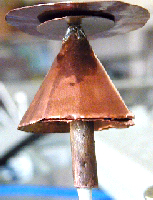
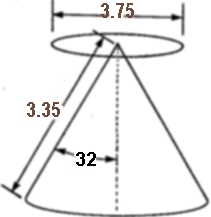
Dimensions in cm's
Our Results
Our gain was as high as 8 dB over the best gain of the internal antenna in the Lucent Bronze card. Our overall dimensions were 3x3.75x3.75 centimeters. We fed our antenna using 50 Ohm thin coax and connecters rated for 2.4 GHz, probably availible at your local Radio Shack with the exception of a special pigtail that can be purchased from nearly any wireless networking vendor. The antenna was fabricated from a short section of copper (water) tubing often used in plumbing, copper foil and a piece of copper thin single sided copper board (fiberglass board plated with copper on one side). Fabrication from aluminum may also work well provided a suitable insulater electrically seperates the disk and the cone (like a rubber stopper). Our final impediance was 56 + j 7.5 and resulting SWR was calcuated at 1.4 using a slotted line.Building a Discone
In building a discone we adapted plans from the ARRL Antenna Book 19th edition for building an HF discone. They suggest using an angle theta of approx. 64 degree angle on the cone and 7/10 ratio of disc diameter to bottom of the cone. The hypotenuse of the cone should be approx. 246/(frequency in MHz) feet. after building a discone of these dimensions, we discovered that by increasing the size of the disc slightly we could decrease our SWR greatly, while only slightly decreasing radiated power (less than 1%). This was discovered on the slotted line using aluminum foil to alter the dimensions of our antenna to optimize the SWR. You may notice the little disc in the picture above. This was our original disc that is fiberglass on the bottom and copper foil on top. When we moved to a larger disc, the old one was retained because the fiberglass on the bottom functions as an insulator to keep the disc from touching the cone. Any insulator will do here, a second disc is not needed.To construct the cone:
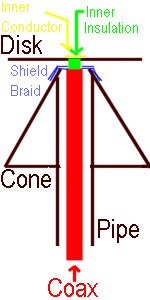
Tuning and Testing
Tuning and testing is an important step to maximizing the "coolness" of your antenna. Remember that antenna building, especcially at microwave frequencies remains highly a "black art" and nearly always requires some tweaking for maximum performance. A good suggestion would be to manufacture several discs and cones to use for testing purposes. Another neat idea is to use aluminum foil that will easily bend and is readibly availible at the grocery store for testing purposes. There are several varibles that are availible for tweaking. In most cases if your antenna works okay try messing with just one. If it is hardly working at all change a couple. Keep in mind this is a reiterative process (and can be lots of fun).Testing Your Antenna Testing your antenna is accomplished to determine whether changes made were helpful or hurtful to factors such as gain and noise level. Many cards are accompanied with nifty software that displays dB measurements for things like signal strength td noise floor. You may have to go digging, but they are usually there. To set up a test bench you need a large open area with power availible. The two stations need to be far enough apart to read a fair signal strength using just internal card antennas. Make a mental note of the signal strength before and after attaching the antenna. The difference between these two numbers is the gain. Keep in mind that dB's are funny creatures and the number you see is probably negative so a smaller number may be better. For example if it read -68 dB before and -40 dB after you have +28 dB gain, and one serious discone :)

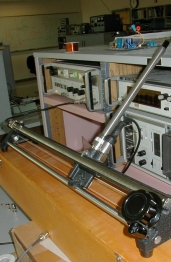
Smith Chart w/Calculations
Sim. Azimuth Results
Sim. Zenith Results
Testing and Optimization
To test SWR and impediance we acquired a 2.4 GHz function generator with AM modulation and a slotted line with the help of our professor Dr. Rob Frohne. A slotted line is simply a length of 50 ohm transmission line that has a slot down the center with a slider that senses the voltage along the line through some sort of capacitive coupling. This is attached to a meter whichs allows you to read SWR and find voltage maxima and minima. From simulation we determined the biggest adjustment that can be made to the cone is adjusting the length between the disc and the cone. Since our design doesn't allow for such change easily we simply bent the disc up and down slightly. We also used aluminum foil to increase the effective surface area of our disc and cone structures. We were aiming for an optimal SWR of 1:1 and impedance of 50 + j 0 ohms. We finally measured 1.4:1 SWR and 56 + j 7.5 ohms impedance.Finding Impedance on a Slotted Line
Measuring Radiation Pattern
To measure the radiation pattern of our antenna we set up a test range in the lawn in front of Kretchmar Hall. Our reference antenna was a 25 dBi gain Cushcraft Yagi pointing towards the test antenna. We planned our site in such a way to avoid reflections from nearby buildings and absorbtion from people walking in between the antennas. The discone was mounted on a soldiering stand that was mounted on a camera tripod. Our reference antenna was plugged into a Mac Airport. The discone was plugged into a Lucent Bronze 802.11 card plugged into a Dell laptop running the Link Test Software that came with the Lucent card. The link test gives the signal strength, noise strength and signal to noise ratio in dB. We then rotated our antenna in several different axes using the tripod, recording the values in each spot. We then graphed the values in MS Excel using radar plots and several nifty tricks to get it to come out looking right.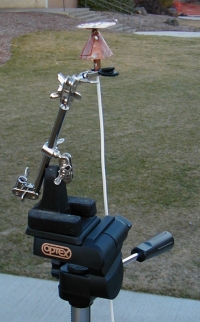
Azimuth Results
Zenith Results
Below are graphs of our results. Click on the image to view larger versions.
Simulation Graphs
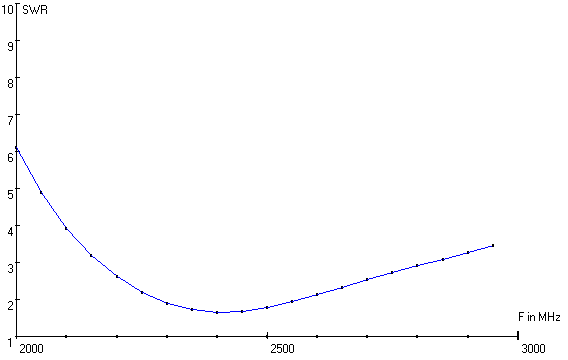 |
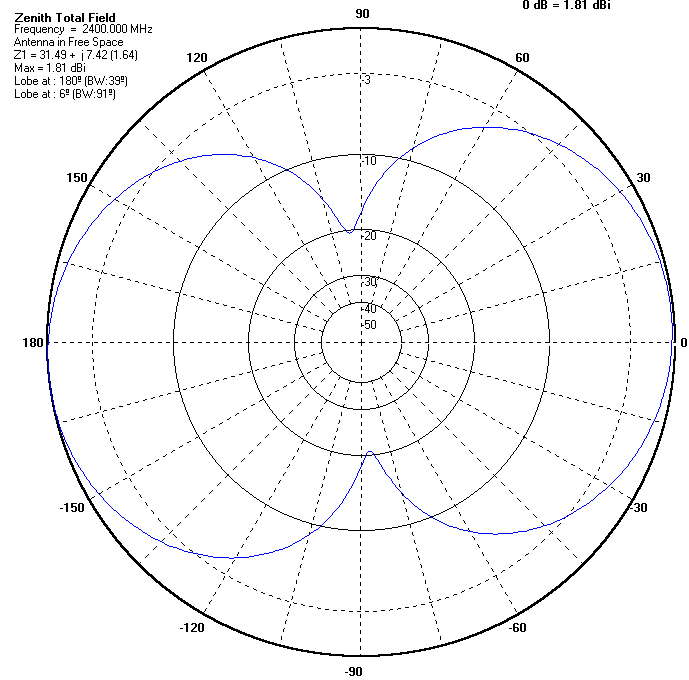 |
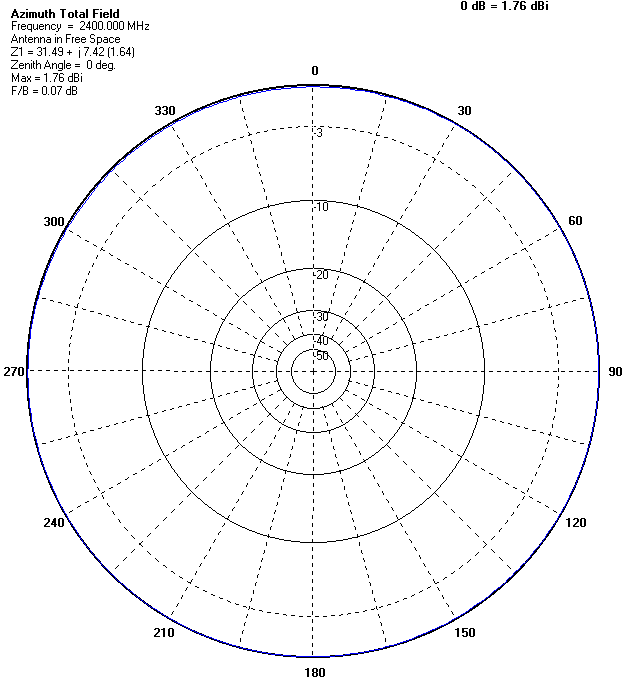 |
 |
| SWR vs. Frequency | Zenith Plot | Azimuth Plot | Model of Simulated Antenna |
Real World Testing Results
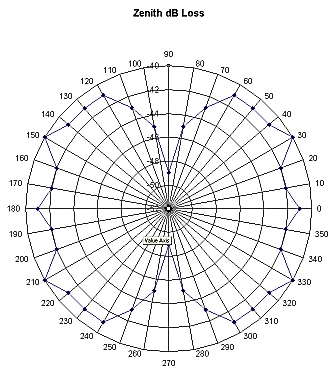 |
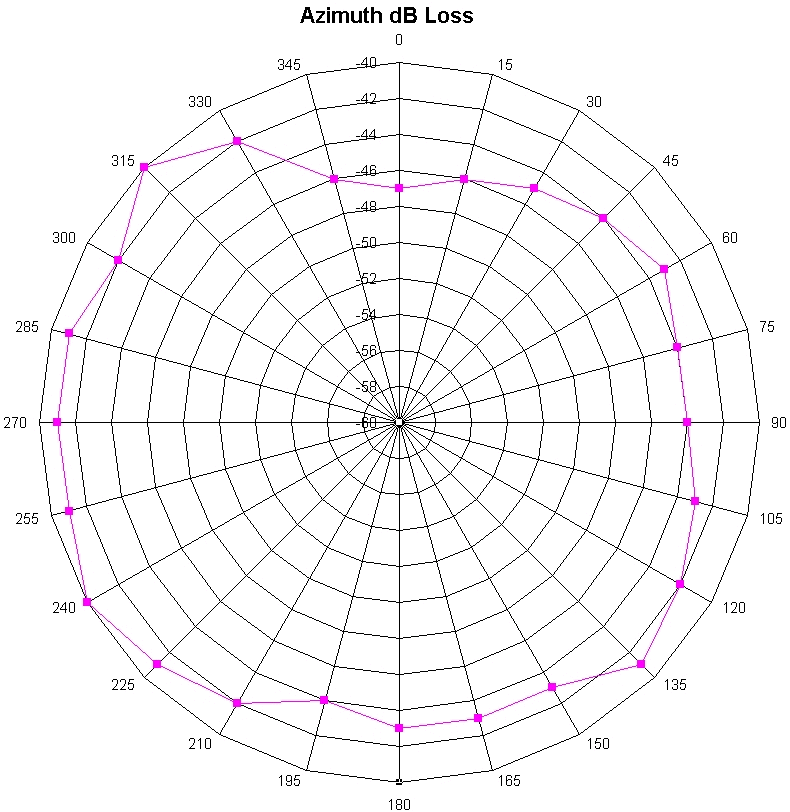 |
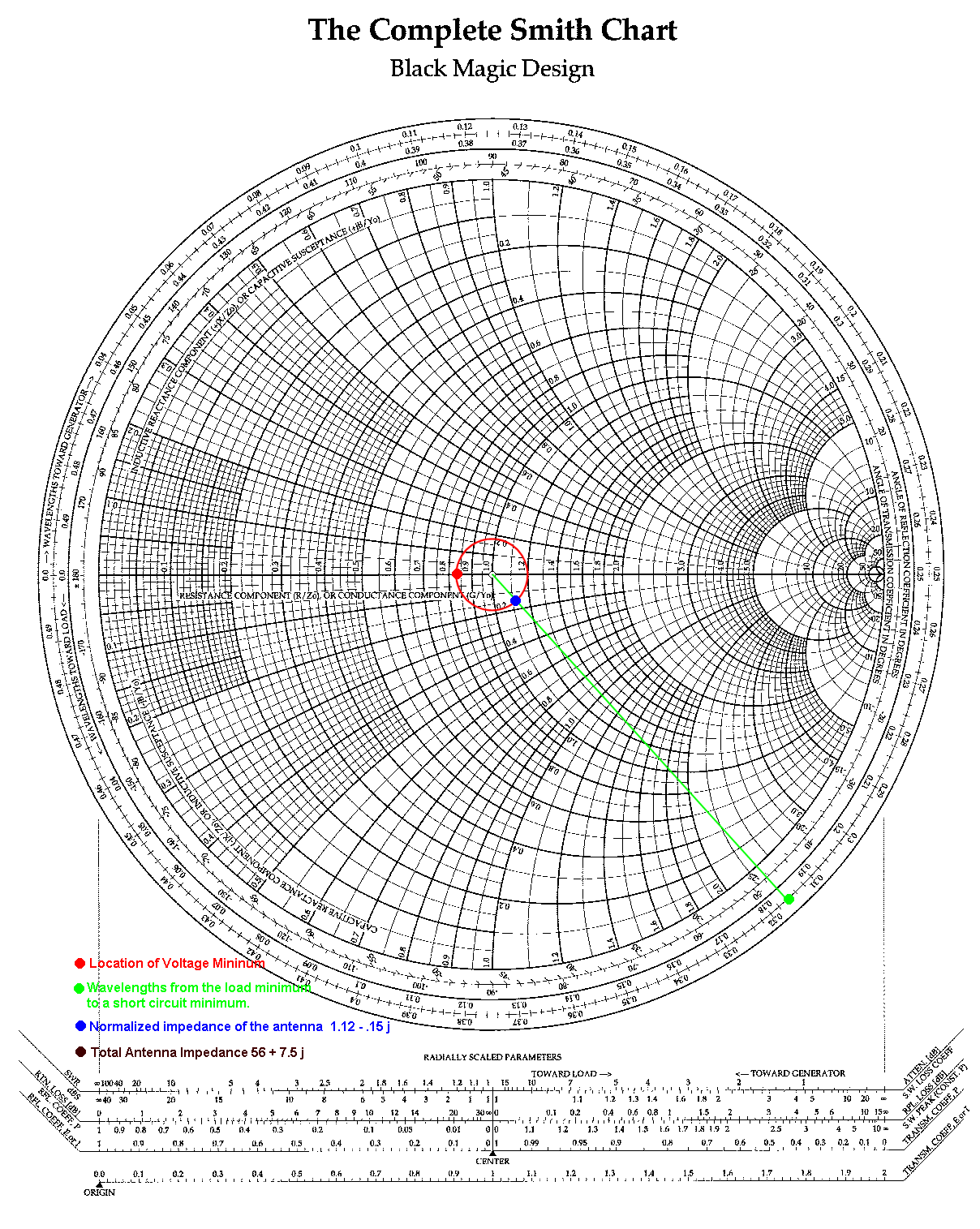 |
| Zenith Plot | Azimuth Plot | Smith Chart with Calculations of Impedance for discone |
Comments:
Standing Wave Ratio (SWR)As is typical for a discone, our antenna acts as a high pass filter. We designed for the best SWR at 2.4 GHz. Note that SWR before 2.4 GHz looks exponential and at higher frequencies appears linear.
Zenith
The typical 3 dimensional radiation pattern for a discone is doughnut shaped as shown in our simulation and real world tests. The slight tip in our simulation seems to result from a strange abnormality in the current distribution of the NEC simulator. Note that the dB indicated on the real world graphs are dB received in the test not a reference measurement.
Azimuth
The Azimuth plots should be fairly circular. The irregularities on the real world test (graph not shown) are probably due to the foil having ridges and dips and the imperfections present in the cone and disc.
Shameless Plug:
Tim is looking for a job. If you need a hardworking and talented Electronic/Electrical Engineer on your staff, e-mail me at kyleti-job@njivy.orgThanks and Links:
Thanks:Dr. Rob Frohne -- Advice and rather effective encouragement to finish our project.
Ralph Stirling -- Letting us borrow his yagi and adapters for testing.
John Ash -- Letting us borrow his laptop and yagi for testing. Advice on choosing a testing program.
Seth McNeill -- For mocking our design. Ha Ha it worked anyway!
Greg Kittle -- For being a wonderful grader and for all the extra credit we are getting for saying that!
David Paden -- For being such a great supervisor and picking up after Tim. Incredible insight and making all of the lousy ideas go away.
Tim Kyle -- For leaving parts all over Chan Shun. Oh yeah... and on a job well done.